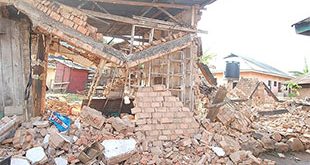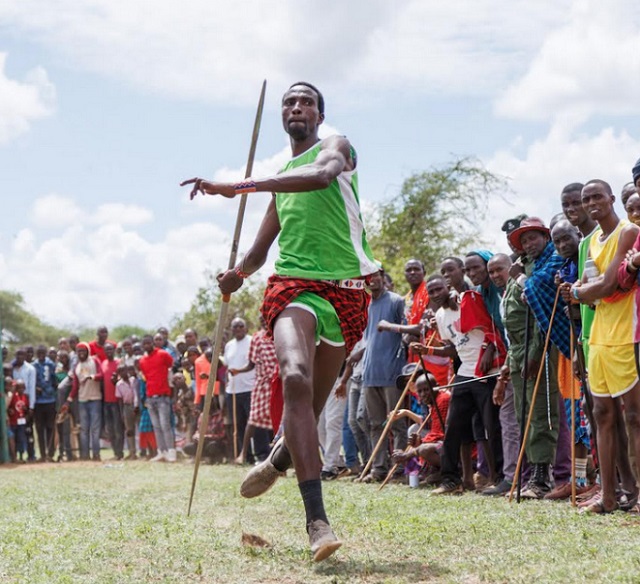
Why warriors are swapping lion massacre for sports trophies
Kampala, Uganda | RONALD MUSOKE | On Dec.10, thousands of spectators in traditional red cloaks and beaded jewellery gathered to watch 160 young Maasai – 120 men and 40 women – compete in the 5th biennial ‘Maasai Olympics.’
The sporting jamboree now in its 10th year was held at Kimana Sanctuary, a Maasai-owned wildlife reserve, about 200km south of Nairobi.
The event has been designed to update traditional Maasai initiation practices. In Maasai tradition, warriors known as Olmurrani killed lions to prove their prestige and protect their prized livestock. But killing lions is getting outdated in modern day wildlife conservation conscious Kenya.
In any case, although lion numbers have been going up recently, today’s Maasai warriors have far fewer lions to hunt than they were in the past. There are estimated to be about 2,500 lions in Kenya’s bushes today. But 10 years ago they were about 3,000. An estimated 100 lions are killed each year in Kenya.
As a way to remove lion killing from the Maasai warrior culture which historically has been one of the key threats to lion conservation in Amboseli, Big Life Foundation; a community conservation non-profit that operates in the Amboseli landscape in southern Kenya, together with Maasai elders came up with the idea of a Maasai Olympics a decade ago.
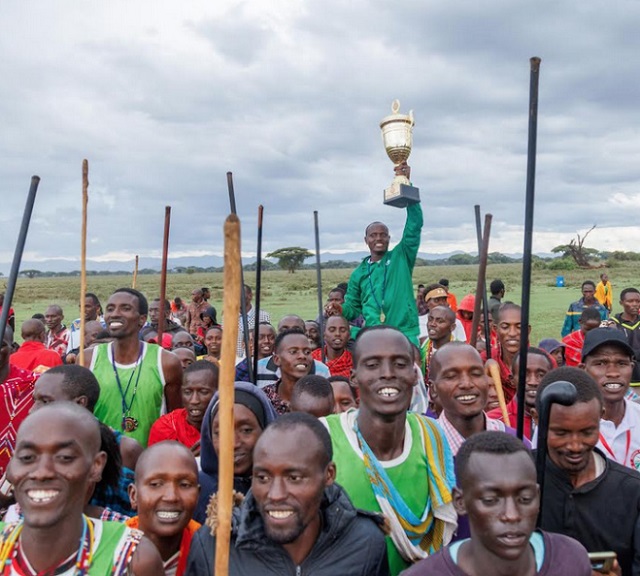
The Maasai Olympics replicates traditional warrior skills in place of the initiation practice of hunting lions as a mark of manhood, strength, and prestige. At this year’s event, participants took part in several disciplines including spear and club throwing, standing Maasai high jump, and sprints.
From August, this year, four competing warrior villages of Eselenkei, Kuku, Mbirikani, and Rombo have engaged in local and regional competitions, culminating in the Dec.10 event.
Coming in the midst of a ferocious drought driven by a series of failed rainy seasons, the global effects of the war in Ukraine that has spiked food costs, and the lingering impact of the COVID-19 pandemic, the event was a rare chance for people to celebrate.
Mbirikani village were overall winners, and were presented with a prize bull and trophies. Speaking shortly after the competition, Nickson Kupere, Mbirikani village’s team captain expressed his excitement saying “It has been a very good day that saw many members of my team winning.”
“We Maasai have been living with wildlife for such a long time but we often saw them as a threat. This competition has changed that, we see wildlife now like we see our cows, and it needs to be protected because it brings us benefits like tourists who come to spend their money here. We’re able to put our children through school.”
This year’s championship also saw Joseph Lekato successfully defend his title in the javelin/spear throwing discipline.
“The Maasai Olympics has really helped change the way that warriors and all people here think about wildlife. You won’t find anyone now in all Amboseliland who wants to kill a lion,” he said.
Straddling southern Kenya and northern Tanzania, The Big Life Foundation works to protect over 1.6 million acres in the Amboseli-Tsavo-Kilimanjaro ecosystem. Using innovative conservation strategies that can serve as models elsewhere, Big Life seeks to protect and sustain East Africa’s wildlife and natural habitats, including one of the world’s best-known elephant populations, by collaborating with local communities, partner NGOs, national parks, and government agencies.
Benson Leyian, the CEO of Big Life Foundation, said the Maasai Olympics is about provoking discussion among the warrior generation, who are the future leaders in this ecosystem, that lion-killing is no longer culturally acceptable, and that conserving our environment is how to ensure a sustainable future for these warriors and their families.
“The Maasai Olympics was an idea from the elders that we helped bring to life and, with other predator protection programmes, it has been extremely successful,” he said.
“Lions and the Maasai have lived in an uneasy balance for generations. Many of our elders would have talked with pride of killing problem lions or to prove their strength. But with more livestock and more people, there was a risk that this culture would have wiped out lions in this landscape, which we could not let happen.
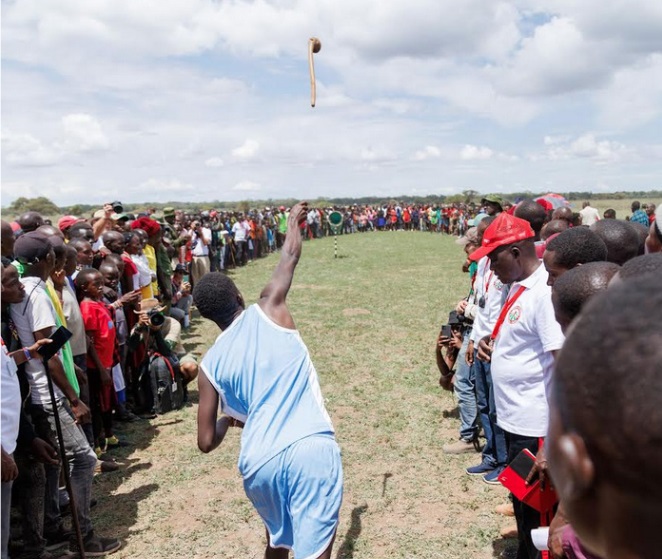 Globally, lions have lost 94% of their range since the start of the 20th century. According to Big Life Foundation, today, there are estimated to be 23,000 lions left: fewer than elephants, rhinos, or gorillas.
Globally, lions have lost 94% of their range since the start of the 20th century. According to Big Life Foundation, today, there are estimated to be 23,000 lions left: fewer than elephants, rhinos, or gorillas.
On the African continent, lions have lost 90% of their historic range and lion numbers have crashed from as many as 200,000 about a century ago, to about 20,000 today. The last 20 years have been the most devastating to the survival of the lions with a reported decline of 43%.
Conservationists in eastern Africa say the lion population decline can be attributed to habitat loss and degradation, reduction in prey base, human-lion conflict, lack of incentives for the communities to tolerate lions – leading to a negative perception of lions and lack of support for their conservation. Other threats include ineffective population management and emerging illegal trade in lion bones and other body parts for traditional medicine and lion trophies.
But, it appears some of these initiatives are starting to pay off. In 2020, a lion cub boom was reported in Kenya’s Maasai Mara, Nairobi and Amboseli national parks. Conservationists suggest the boom was due to ongoing initiatives in the country which are leveraging on tradition to conserve the big cats.
The reduction in lion killing is said to be the result of other programmes like this one by Big Life and others including Lion Guardians and the Born Free Foundation. It includes building predator-proof livestock pens, paying compensation to herders whose livestock is killed by predators to deter retaliation, and increasing the financial benefits mostly from tourism that Maasai families receive from continuing to protect wildlife on their land.
Lion Guardians, another NGO working on similar projects, has monitored a six-fold increase in the Amboseli lion population between 2004 and 2020, making it the fastest growing lion population on community-owned land in Africa, an astonishing turnaround following near extinction at the turn of the century.
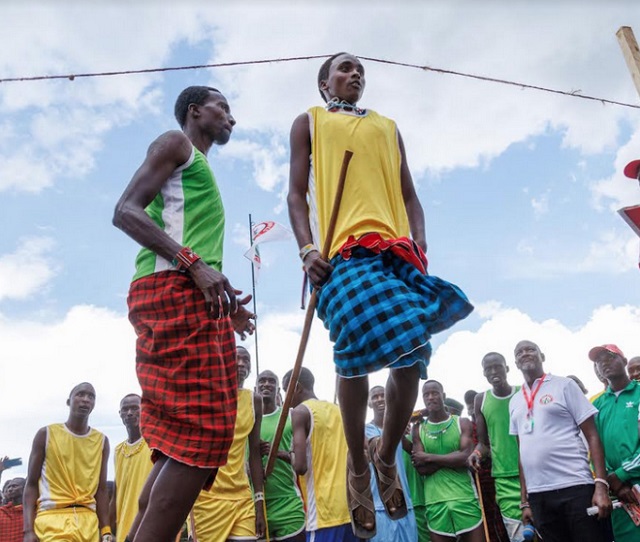 According to Lion Guardians, within the Amboseli area which is dominated by Maasai pastoralists and their livestock, there are now six to seven lions per 100 sq km and the ecosystem now boasts over 250 lions as Maasai warriors who used to hunt lions as a sign of achievement are learning to monitor and protect them instead.
According to Lion Guardians, within the Amboseli area which is dominated by Maasai pastoralists and their livestock, there are now six to seven lions per 100 sq km and the ecosystem now boasts over 250 lions as Maasai warriors who used to hunt lions as a sign of achievement are learning to monitor and protect them instead.
Eric Ole Kesoi, a Maasai community manager at Lion Guardians explained to AFP in November, 2020, some cultural insights of the Maasai community in relation to lion killings.
“We used to almost kill any lion that we hear roaring around the Amboseli ecosystem or even if they have not killed anything, because of that traditional culture that values bravery, we used to wipe out any lion that we see here,” Kesoi said.
“It even reached a time that we used to go all the way to the neighbouring Amboseli National Park to look for lions because there were no lions close by. My tracking skills were evident from the word go and therefore I was very much involved in lions and tracking. I am using those skills to closely monitor and conserve lions.”
According to Big Life Foundation, recent research found 87% of warriors aware of the Maasai Olympics reported the event made them less interested in killing a lion and 91% said it made them more interested in lion conservation.
****
 The Independent Uganda: You get the Truth we Pay the Price
The Independent Uganda: You get the Truth we Pay the Price


